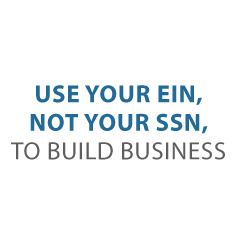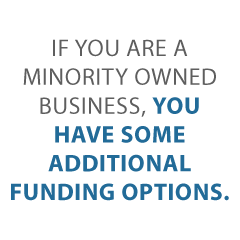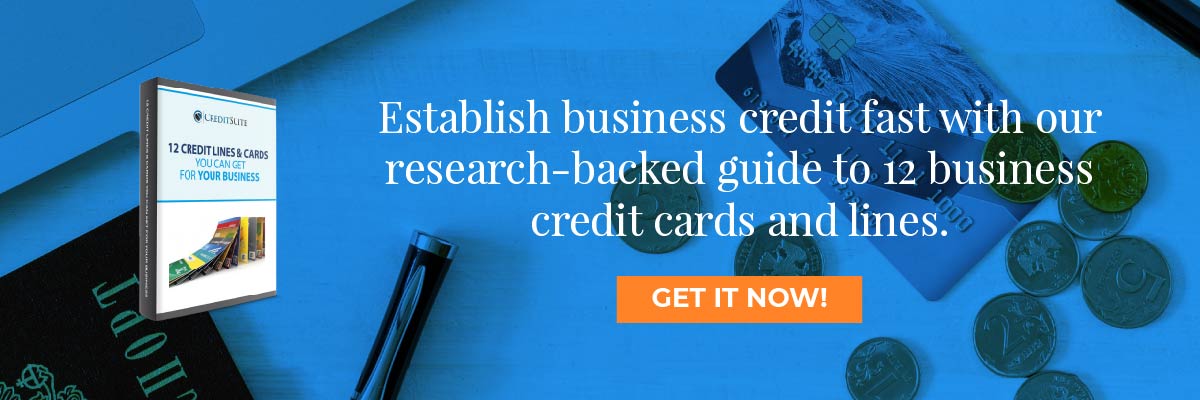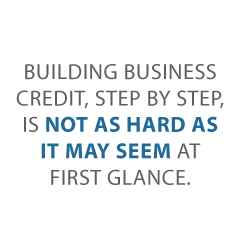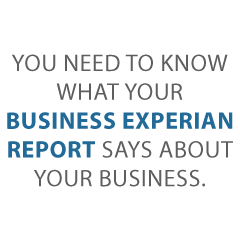
Start the New Year Off with a Bang: How to Start Business Credit in 2020
Every business needs strong business credit. Make it a goal in this new year to learn how to start business credit, and how to keep it strong so you can grow your business into more than you ever imagined.
Learn How to Start Business Credit, and How to Keep It Strong
The new year is full of promise. We make resolutions, set goals, and determine to stick with it all, until what was once a resolution becomes a habit. Then, a few weeks later in most cases, we are back to the way things were. We are eating the same, slipping into old habits, and nothing is really any different. Sometimes though, one or two things stick.
Learning how to start business credit really can be one of those things that sticks if you use or process and support system along the way.
In most cases, you can’t access the funding your business needs without credit. As a business owner, you not only have to worry about your personal credit, but you also have to pay attention to the credit rating of your business.
Whether you are new to business ownership or you already run an established business, you need to know how to start business credit building. It is vitally important to have separate credit for your business.
Check out our best webinar with its trustworthy list of seven vendors to help you build business credit.
How to Start Business Credit in the New Year: Establish Your Business as a Fundable Entity Separate from Yourself
To do this, you need to establish your business as separate from yourself. Even if you have stellar 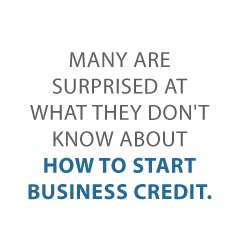 personal credit, you don’t want it messing with your business credit. The reverse is true as well.
personal credit, you don’t want it messing with your business credit. The reverse is true as well.
If something unfortunate happens on the personal credit side, you do not want your business to suffer. On the flip side, if your business struggles and its credit suffers, you want your personal credit protected as much as possible.
Business credit doesn’t build on its own however.. It takes some work to set things up right. It’s not hard, but it does take some effort.
The first step is to make sure your business has an address and phone number that is different from what you use personally. You can use VoIP phone services and virtual business address options to keep from having to get a whole new phone line or buy a building if you are running your business from home.
You Have to Incorporate
Next, you have to incorporate. There are a few options.
- C Corp
This is the most definitive separation, but it is also the most complicated and expensive. Before choosing this option, be certain there are reasons other than starting business credit. If it isn’t necessary for some other reason, there are other, less complicated, and less costly options.
- S Corp
This option basically offers the same separation as the C Corp, but you pay taxes at the personal level. This is in contrast to the C Corp model where you pay on both the personal level and corporate level resulting in double taxation. It is also cheaper than incorporating as a C Corp. If it isn’t necessary to file as a C corp, this is a good alternative.
- LLC
Forming a Limited Liability Corporation results in less liability, thus the name, and offers enough separation to serve the purpose of starting business credit. If you are not required to be a C Corp or S Corp, this is the easiest and most cost-effective way to create the separation of business and personal credit needed.
Stop Using Your SSN to Apply for Business Credit
You may think you cannot do this. After all, doesn’t every credit application ask for an SSN? You need to apply for an EIN. Your SSN connects to you, personally, and it is pretty much a given that anything connected to it credit wise will end up on your personal credit reports.
No matter what you do to separate your business, if you apply with your SSN it’s likely going to hit your personal credit report.
The process of applying for and EIN is easy. The IRS has an online form, and as soon as they verify the information, you receive your number. It typically happens almost immediately.
You Need a D-U-N-S Number
Dun and Bradstreet (D&B) is the largest and most commonly used business credit reporting agency (CRA). They issue a 9-digit DUNS number to each credit file. Application is easy and free, and once you have that number, you will be even closer to establishing credit for your business separate from your own.
Check out our best webinar with its trustworthy list of seven vendors to help you build business credit.
Keep Expenses Separate
If you are using the same bank account for business and personal expenses, stop. For starting business credit, you need a separate business bank account. Some vendors and credit cards want to see a dedicated business account with a minimum balance before approval. It will also help to have the expenses already separate come tax time.
How to Start Business Credit in the New Year: Establish Credit Lines with Vendors
There are two ways to go about this. Typically, a combination of the two is the best bet for starting business credit quickly. First, if you are already working with any vendors, ask them about opening a credit line. Since you already have a relationship with them, they may be more willing to do so without checking your credit. If they agree, be sure the account is in your business name and lists your business information, not your personal information. Then, ask if they will report payments to the business credit reporting agencies.
Either way, you will also need to start working with starter vendors. This is a vital step in starting business credit. You cannot skip it. What are starter vendors? These are vendors in the vendor credit tier that will offer net terms on invoices without checking credit. Then, they will report those payments to the business CRAs. If you can get accounts with existing vendors also, you will build a strong credit score faster, but you still need to work with starter vendors.
Sometimes utility companies are willing to report payments to credit agencies also. You almost always have to ask though. The worst they can do is say no. If they do, you haven’t really lost anything. If they say they will, starting business credit will only go faster.
Talk to everyone, including telephone, electric, gas, and even internet. Make sure they are in your company name with your company’s contact information first however.
How to Start Business Credit in the New Year: Get Business Credit Card Accounts
Once you have your name, EIN, and separate contact information, you need to use it to apply for business credit cards. This has to be done in order as well. The vendor credit tier is actually the bottom of 4 different credit tiers. The other three are made up of varying levels of business credit cards. When starting business credit, after the vendor credit tier, you can step up to the retail credit tier.
These are the cards that are issued by specific stores and can only be used at the stores that issue them. For example, a card issued by Office Depot that can only be used for purchases from Office Depot would be in this tier.
Once you get enough cards in the retail credit tier, you can apply for cards in the fleet credit tier. Those are the cards that can only be used for fuel and automobile maintenance and repairs. A couple of examples of companies that issue these types of cards are Fuelman and WEX.
After that comes the cash credit tier. Those are the standard cards you can use anywhere for anything. They typically have higher limits and lower interest rates. Once you qualify for these cards, all that is left is to keep your business credit strong.
How to Start Business Credit in the New Year: Maintain Your Business Credit
There is no point in starting business credit if you are not going to keep it going strong. You have to make your payments on time and handle it responsibly. Planning plays a big role in this. Do not overspend, and try not to use credit that you cannot pay back in a timely manner. You don’t have to pay it off all at once. You need to make payments to build credit anyway, but be sure you can make the payments.
In addition to handling credit responsibly, you need to monitor your credit reports. Even if you are just beginning to establish business credit, go ahead and get a copy of your business credit report. There may not be anything on there, but you need to know when changes are made. This original report will give you a baseline.
Check out our best webinar with its trustworthy list of seven vendors to help you build business credit.
We can help you monitor your business credit for a fraction of what it costs with the credit reporting agencies. Go here to find out more.
What to do If you Find a Problem
Each CRA has a different process for dealing with problems on your report. You will have to find out from each one what their process is for reporting mistakes. However, the standard is that you mark the mistake on the report and send them a copy. Also, provide the correct information along with any back up documentation. Documentation may include proof of payment such as receipts, copies of bank statements, proof of change of address, and more. Send it all certified mail, and always send copies of documentation, not originals.
Remember mistakes can include things other than payment information. Make certain you clear off anything that should be on your personal credit report, and vice versa. Keep an eye on information that may need to be updated as well, such as phone number and address.
Is it Too Late to Worry About How to Start Business Credit?
The short answer is, nope. While the process of separating your business from yourself as the owner is definitely easiest handled in the original set up process, it can be done at any time. If you are already up and running it will take you some extra time and expense to change any marking materials and directories that already list your personal contact information. It can also take some time to go through the incorporation process. It’s worth it though.
How to Start Business Credit: A Word About Online Presence
While having an online presence doesn’t really affect your business credit score, a poor online presence, these days isn’t very conducive to success. In fact, so many people head to the internet first these days, if you don’t have a website you might as well not even exist. The thing is, you need to have a professional website. You don’t want something that is just thrown together.
This isn’t just for your potential customers, but also for potential lenders. You never know what type of research a lender may do other than pulling a credit report. If they see a poorly executed website, it will look unprofessional. That will not bode well for your approval chances. Be sure you have a business email with the same URL as the website also. You shouldn’t use your personal email address any more than your personal phone or mailing address.
How to Start Business Credit in the New Year: Set Your Goals and Stick to Them
The best way to stick with it and keep working toward your goals is to have a solid support system. That is exactly what CreditSuite is. We can help you with every step of the process from finding starter vendors that will get your business credit score rolling to monitoring your credit so you know where you stand. Building business credit isn’t hard, but it is definitely a process that requires intentionality and dedication. Let this year be the year you take the plunge and gain access to all the business funding you need to successfully run and grow your business.
The post Start the New Year Off with a Bang: How to Start Business Credit in 2020 appeared first on Credit Suite.


